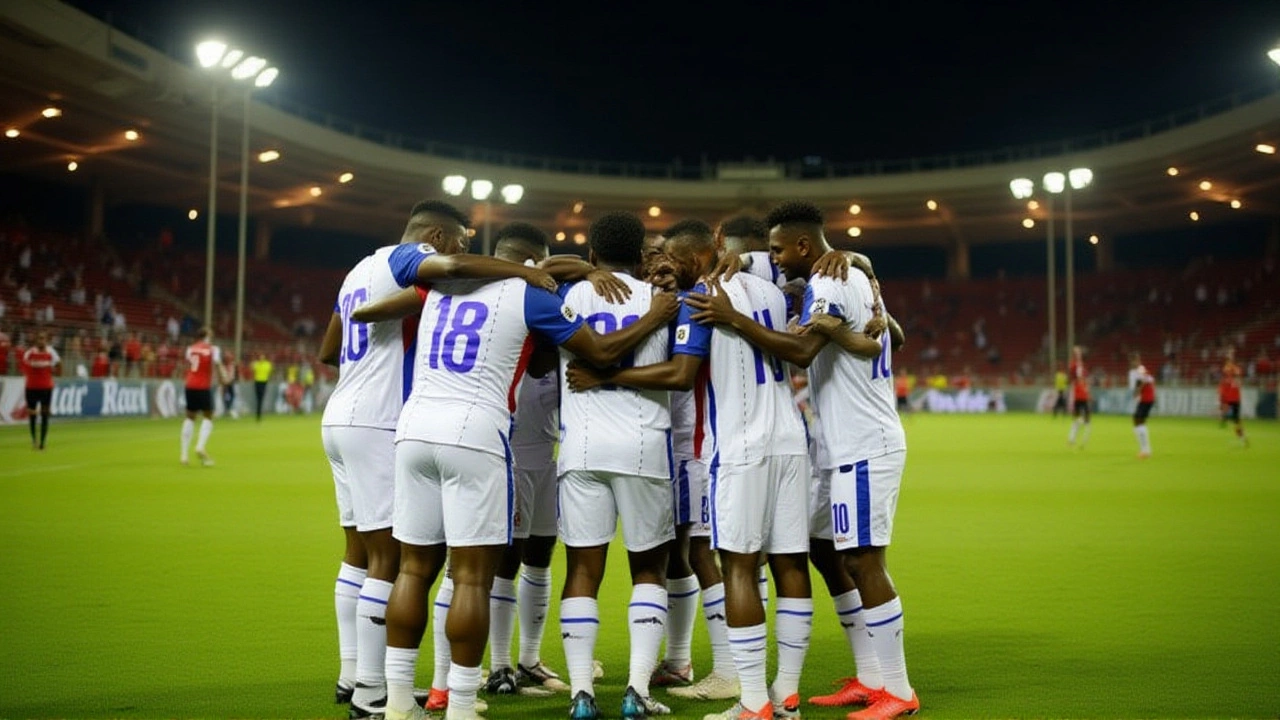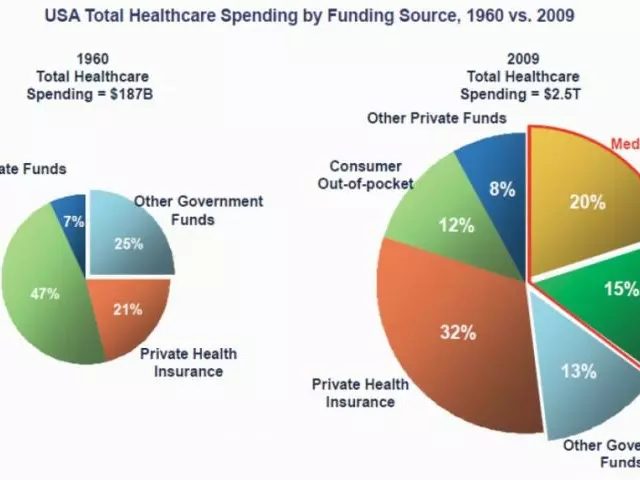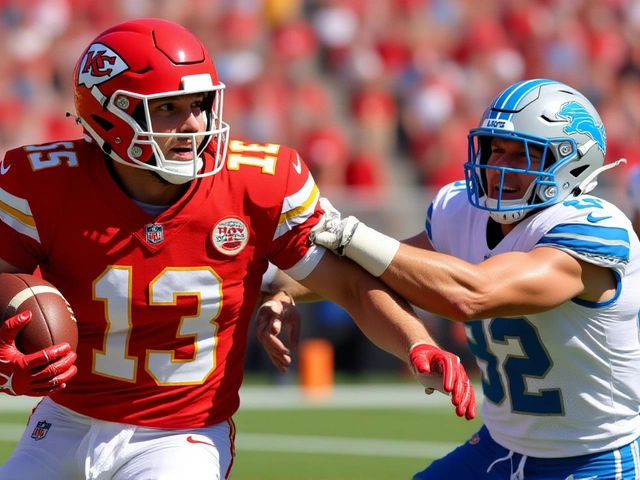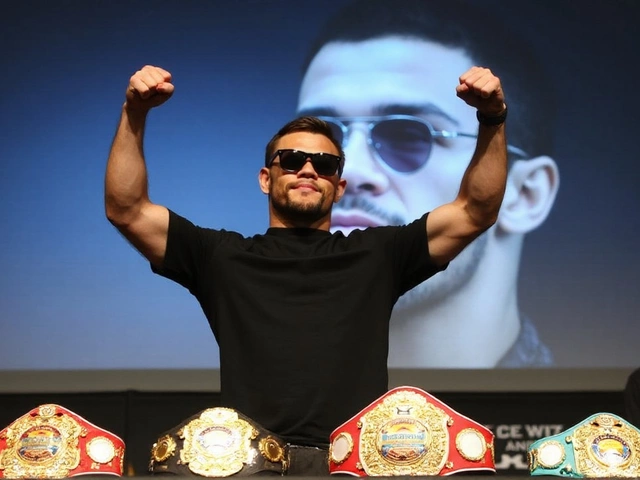Costa Rica Beats Nicaragua 4-1 as World Cup Qualifying Heats Up
On October 14, 2025, Costa Rica crushed Nicaragua 4-1 in front of a roaring crowd at the Estadio Nacional de Costa Rica in San José, taking a giant step toward automatic qualification for the 2026 FIFA World CupUnited States, Canada, and Mexico. The win wasn’t just about three points—it was a statement. After a sluggish start to their qualifying campaign, Costa Rica finally looked like the team that stunned the world in 2014. And the man who made it happen? Alonso Martínez, the 24-year-old forward from New York City FC, who scored twice in the first half and kept the pressure on a nervous Nicaraguan backline.
A Night of Fire in San José
The electric atmosphere inside the 35,000-seat stadium was palpable from kickoff. Fans waved flags, chanted in unison, and drowned out the occasional whistle with deafening roars. It was the kind of night that reminds you why football still matters in Central America. Alonso Martínez opened the scoring in the 12th minute after a perfectly timed header from Manfred Ugalde found him at the far post. Nicaragua responded quickly—Junior Arteaga equalized in the 26th minute with a lucky bounce off his foot, slipping as he fired past legendary goalkeeper Keylor Navas. But the Costa Rica response was brutal. Two minutes later, a corner kick from Kendall Watson was headed down into the box, and Martínez pounced again. The crowd erupted. The game was no longer in doubt.Class and Composure
The second half was more about control than chaos. Manfred Ugalde, who plays for FC Zenit Saint Petersburg, made the game safe in the 49th minute after a turnover by Nicaragua’s keeper left the net empty. Then came the moment that will be replayed for years: the 90th minute plus four seconds. With the clock bleeding out, Francisco Calvo, the 32-year-old captain from Konyaspor, launched himself into the air like a man possessed. A cross came in from the left, and Calvo twisted his body, connecting with a bicycle kick that curled into the top corner. The stadium went silent for a split second—then exploded. “Magnificent,” one ESPN analyst called it. “A moment of Costa Rican class,” wrote La Nación. It was the kind of goal that turns players into legends.What This Means for the Group
Before this match, Costa Rica sat second in Group C with four points from four games—four draws, zero wins. The pressure was mounting on head coach Miguel Herrera, who took over in June 2025 after years of underperformance. Now, with six points, they’re just two behind group leaders Honduras, who beat Haiti 3-0 on the same night. Haiti, with five points, remains in third. Nicaragua? Still at the bottom with just one point. Their dream of reaching the 2026 World Cup is officially dead. They’ve never qualified before—and now, with two matches left, they can’t catch anyone.The Road Ahead
The next two games will decide everything for Costa Rica. First, they travel to Haiti on November 13, 2025—a tough away fixture where they’ve struggled in recent years. Then, back home in San José on November 19, they face Honduras in what could be a de facto playoff for direct qualification. Win both, and they’re in. Lose one, and they’re forced into a brutal intercontinental playoff against a team from Asia, Africa, or Oceania. That’s not unthinkable—but it’s risky. Costa Rica has qualified for six World Cups: 1990, 2002, 2006, 2014, 2018, and 2022. Missing out on a seventh would be a national disappointment.
Behind the Scenes
Coach Miguel Herrera didn’t gloat after the match. Instead, he praised his team’s resilience. “I really liked what the team projected on the field—composure, knowing what we had to do,” he said. He admitted the equalizer was a mistake, but emphasized that the players didn’t panic. “We didn’t drop our heads and went to look for the game.” That mental toughness is what’s changed since the 1-1 draw in Managua on September 5. Back then, Alonso Martínez was the target of a red-card tackle that sparked controversy. Now, he’s the talisman. And Keylor Navas, at 38 and with 102 international caps, remains the steady hand in goal—still one of the best in the region.What’s Next for Nicaragua?
Nicaragua’s journey ends here. Their next match, against Honduras on November 13, is a formality. They’ve never won a World Cup qualifier at home. They’ve never scored more than two goals in a single qualifier. Their squad is young, talented in patches, but lacks the experience to compete with the region’s elite. Still, the 4-1 loss doesn’t define them. The fact they held Costa Rica to a draw in Managua showed promise. Maybe this is the start of something new.Frequently Asked Questions
How does this result affect Costa Rica’s chances of qualifying for the 2026 World Cup?
The 4-1 win lifted Costa Rica to six points in Group C, placing them just two points behind leaders Honduras. With two matches left—away against Haiti and home against Honduras—a win in either game virtually guarantees a top-two finish, which means direct qualification to the 2026 World Cup. Even a draw against Haiti and a win over Honduras would likely be enough. Missing out now would require a collapse, which seems unlikely after this performance.
Why is Francisco Calvo’s bicycle kick so significant?
Calvo’s goal wasn’t just a goal—it was symbolic. At 32, he’s one of the last links to Costa Rica’s golden generation of 2014. Scoring such a spectacular goal in stoppage time, against a team that had never beaten them at home, sent a message: this team still has heart, flair, and belief. It’s the kind of moment that unites a nation and gives young players something to aspire to. In a country where football is religion, this was a miracle on a Sunday night.
What role did Keylor Navas play in this match?
Navas didn’t have a busy night, but his presence was critical. At 38, he’s the most experienced player on the pitch, and his calm under pressure steadied the defense after Nicaragua’s equalizer. His reaction to Arteaga’s goal—immediately rallying his backline—showed leadership. He’s not just a goalkeeper; he’s the emotional anchor. With 102 caps, he’s the most capped player in Costa Rican history, and his continued form is a major reason the team is still in contention.
Why is this World Cup qualifying cycle different from previous ones?
For the first time, the 2026 World Cup will feature 48 teams instead of 32. Concacaf gets six direct spots—up from three in 2022—and one playoff spot. That means more teams have a shot, but also more pressure to finish in the top two. Costa Rica, which has historically relied on playoff runs, now has a clearer path: win your group or get close. The stakes are higher, and the margin for error is smaller. This match wasn’t just about points—it was about mindset.
Has Nicaragua ever come close to qualifying for the World Cup?
Never. Nicaragua has never qualified for a World Cup finals tournament since their first attempt in 1965. Their best run came in 2006 qualifiers, when they reached the third round but lost to Panama. Their squad is mostly amateur or semi-pro, and they lack the infrastructure to compete with nations like Costa Rica or Honduras. Still, their 1-1 draw in Managua earlier this year showed signs of progress—something the federation is now trying to build on.
What’s the significance of Miguel Herrera’s appointment as coach?
Herrera, a former Mexico national team coach, was brought in after Costa Rica failed to qualify automatically for the 2022 World Cup—a shock to the nation. His appointment was controversial; many wanted a local coach. But his tactical discipline and man-management have paid off. He’s instilled structure without stifling creativity. His comments after the match—focusing on composure, not just results—signal a cultural shift. He’s not just trying to qualify; he’s trying to rebuild a national identity around the team.







